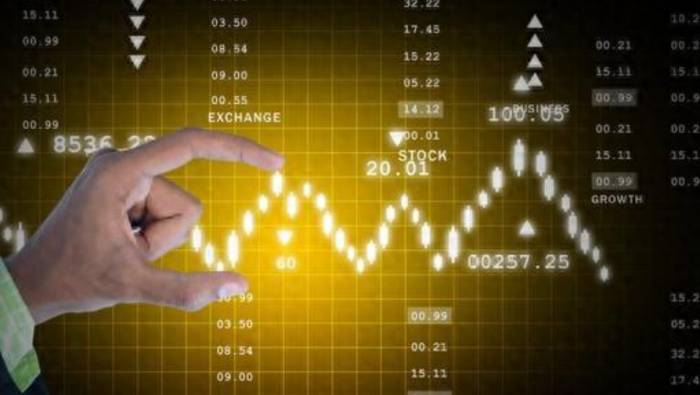Dow Peaks, Oil Prices Surge Amid Supply Pressures
The fluctuations in the U.S. stock market on Monday reflected a waiting game for investors, anticipating crucial inflation data to be released later in the week, alongside Nvidia's earnings report. The closing figures revealed a slight uptick in the Dow Jones Industrial Average, up by 65.44 points, or 0.16%, reaching 41,240.52. Conversely, the Nasdaq Composite saw a decline of approximately 0.85%, settling at 17,725.76 points, while the S&P 500 dipped by 0.32% to finish at 5,616.84.
The atmosphere was charged with uncertainty, as many market participants were closely monitoring remarks from San Francisco Fed President Mary Daly, who stated the appropriateness of initiating interest rate cuts, starting with a reduction of 25 basis points. She emphasized that "the labor market has achieved full balance," indicating a readiness for policy adjustment.
Moreover, Federal Reserve Chairman Jerome Powell's comments from the previous week set the stage for potential rate cuts. Market reactions were stirred by various inadequacies in economic data that sparked sell-offs back in early August. Investors expressed concerns regarding the Fed's possible delay in action, fearing it could negatively impact the U.S. economy. Morgan Stanley commented that while recent data has trended slightly weaker than Fed expectations, there isn't a drastic deviation. They maintained their stance that the rate-cutting cycle would commence with a modest 25 basis point reduction, although major softness in the job market could lead to larger adjustments in the future.
In a detailed report from Oppenheimer Asset Management, it was suggested that Powell's hints towards rate cuts were likely supported by recent downward adjustments in annual employment growth figures released by the Bureau of Labor Statistics. Such insights add a critical layer of context when analyzing the Fed’s policy direction.
In terms of bond yields, mid to long-term U.S. Treasury yields saw a slight rise. The two-year Treasury yield, closely tied to interest rate expectations, was quoted at 3.93%, while the benchmark ten-year yield was reported at 3.81%. According to the CME Group's FedWatch tool, the probabilities for a 25 basis point cut stood at 67.5%, whereas the odds of a 50 basis point reduction were pegged at 34.5%, illustrating market anticipations for the upcoming policy decisions.
The spotlight will certainly illuminate the eagerly awaited personal consumption expenditure (PCE) data for July, which serves as the Fed's preferred inflation gauge. Analysts anticipate that this will provide vital information on the trajectory of monetary policy easing.
Chief Investment Strategist Sam Stovall from CFRA Research highlighted that the Fed is poised for rate hikes of 25 basis points in September, November, and December. This approach is designed to convey to the markets that the Fed is not falling behind the curve, all the while avoiding rapid engagement in a rate-cutting cycle, which could signal economic distress.

Turning the focus to individual stock performances, Nvidia experienced a downturn of 2.3%. The tech giant is under immense scrutiny as investors await its upcoming earnings report. Kim Forrest, Chief Investment Officer at Bokeh Capital Partners, remarked that "Nvidia’s upcoming report will reveal significant insights regarding the anticipated demand for artificial intelligence over the next six months," underlining the critical nature of this data for broader tech market sentiment.
Concerns have been bubbling in the tech sector regarding Nvidia's performance, as underscored by Ross Mayfield, an analyst at Baird. He noted that while the market remains relatively healthy, a substantial underperformance in technology could hinder overall market progress, given its heavy weighting in major indices.
Additional tech stakeholders included Apple, which managed a modest increase of 0.2%. The company announced a press conference scheduled for September 9 at its headquarters in Cupertino, California, where it’s expected to unveil the new iPhone and Apple Watch. Speculation around this year's model suggests a potential designation as iPhone 16, boasting enhancements such as a larger display, revamped camera, and new color options. Apple is also set to roll out the latest iOS 18 and introduce its artificial intelligence application, Apple Intelligence.
The broader tech landscape reflected mixed results: Microsoft slid by 0.8%, Amazon dipped by 0.9%, and Meta saw a decline of 1.3%, while Alphabet (Google) managed a gain of 0.3%.
Boeing reported a drop of 0.9% following NASA’s decision to select SpaceX over Boeing for retrieving stranded astronauts via its Starliner spacecraft, marking a significant shift in the competitive landscape of space exploration.
On the international front, Pinduoduo saw a staggering decline of nearly 29% after reporting its second-quarter revenues fell short of market expectations, illustrating the volatility and high-stakes nature of tech stock valuations in the current market climate.
In terms of economic indicators, the U.S. durable goods orders witnessed a robust recovery, rebounding by 9.9% in July, surpassing expectations, largely fueled by renewed growth in defense and civilian aircraft sectors. The Dallas Fed reported a modest improvement in August's regional manufacturing index, though it remained below the growth threshold, recorded at -9.7%, highlighting ongoing challenges in the manufacturing domain.
Commodity markets reacted strongly, with oil prices surging significantly amid concerns that escalating tensions in the Middle East could disrupt regional oil supplies. A notable decline in Libyan production, coupled with expectations surrounding U.S. interest rate cuts boosting global economic prospects, led to West Texas Intermediate (WTI) Crude's near-term contracts rising by 3.46% to $77.42 per barrel, while Brent Crude increased by 3.05% to $81.43 per barrel.
Simultaneously, international gold prices experienced an upward trend, with COMEX gold futures for August delivery climbing by 0.37% to $2,517.70 per ounce, as investors sought the safe haven of precious metals amid market uncertainties.
Leave A Comment